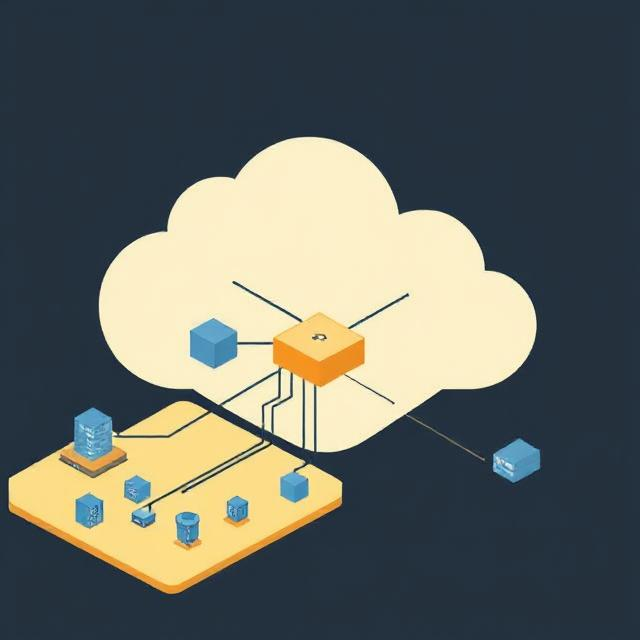The OSI Model, short for Open Systems Interconnection Model, is a fundamental framework that helps us understand how communication occurs in a network. Think of it as a layered roadmap that breaks down the complex process of sending and receiving data between devices into manageable parts. By organizing communication into seven distinct layers, the OSI Model simplifies network design, troubleshooting, and ensures seamless interaction between different devices and systems.
What Is the OSI Model?
At its core, the OSI Model provides a universal language for networking, defining how data moves from one device to another. Each of the model’s seven layers plays a vital role, with specific responsibilities that ensure data is transmitted accurately and efficiently.

The Seven Layers of the OSI Model
1. Physical Layer (Layer 1)
The Physical Layer is the foundation of network communication. It deals with the actual hardware involved in data transmission, such as cables (Ethernet, fiber optics), radio waves (Wi-Fi), connectors, and switches. You can think of this layer as the roads or highways that data travels on—providing the physical path for information to move from one device to another.
2. Data Link Layer (Layer 2)
This layer ensures that data is sent correctly over the physical connection. It organizes data into frames, manages error detection and correction, and controls how devices access the medium. Imagine the Data Link Layer as a postal service that makes sure letters are correctly packaged, addressed, and ready for delivery.
3. Network Layer (Layer 3)
The Network Layer’s main job is routing—determining the best path for data to travel across networks. It uses IP addresses to identify devices and directs data packets accordingly. This layer functions like a GPS system, guiding data from its source to its destination efficiently.
4. Transport Layer (Layer 4)
The Transport Layer guarantees that data arrives safely and in the correct order. It manages error recovery, flow control (to avoid overwhelming the system), and ensures reliable delivery. Think of it as a careful delivery driver who not only delivers packages but also verifies that nothing is missing and everything arrives in sequence.
5. Session Layer (Layer 5)
This layer manages the sessions or connections between devices. It keeps communication channels open and organized until the data exchange is complete. The Session Layer works like a phone call operator, ensuring that the call remains connected during conversation and is properly disconnected afterward.
6. Presentation Layer (Layer 6)
The Presentation Layer formats data to ensure that the receiving device can understand it. This includes data encryption for security and data translation to the proper format. Consider it the translator of the OSI Model, converting messages into languages understood by both sender and receiver, while also protecting sensitive information.
7. Application Layer (Layer 7)
At the top of the OSI Model sits the Application Layer, where interaction with the user happens. It encompasses the applications and services we use daily, such as web browsers, email clients, and file transfer tools. This layer is the user interface—the point where we directly access network services.
Summary of OSI Model Layers
| Layer | Primary Function | Analogy |
|---|---|---|
| Physical Layer | Handles hardware and physical transmission | Roads and highways |
| Data Link Layer | Frames data and manages error detection | Postal service |
| Network Layer | Routes data using IP addresses | GPS navigation system |
| Transport Layer | Ensures reliable, ordered delivery | Delivery driver |
| Session Layer | Manages ongoing connections | Phone call operator |
| Presentation Layer | Formats and encrypts data | Translator |
| Application Layer | User interface with network services | Web browser or email client |
Why the OSI Model Matters
The OSI Model is more than just a theoretical concept—it’s a practical tool with real-world impact. Here’s why it’s important:
-
Standardizes Communication: By dividing network communication into layers, the OSI Model provides a universal framework that manufacturers and engineers can follow, ensuring devices from different vendors work seamlessly together.
-
Simplifies Troubleshooting: When network issues arise, the layered structure helps pinpoint problems quickly—whether the issue is with hardware, routing, data integrity, or software applications.
-
Guides Network Design: Understanding each layer allows engineers to design more efficient, scalable, and secure networks tailored to specific needs.
In summary, the Open Systems Interconnection Model remains a cornerstone of modern networking. By breaking down complex communication into clear layers, it enables technology to work smoothly behind the scenes, connecting our devices, applications, and people all over the world.
Tags: Application Layer, communication standards, data encapsulation, Data encryption, data formatting, data link layer, data packaging, data translation, Data transmission, error detection, flow control, IP addressing, layered architecture, network communication, network design, network framework, network hardware, network interoperability, network layer, network layers, network protocols, network security, network services, network troubleshooting, network troubleshooting tools, Open Systems Interconnection, Open Systems Interconnection Model, OSI Model, packet routing, physical layer, Presentation Layer, reliable delivery, Routing, scalable networks., Session Layer, session management, Transport Layer, user interface

